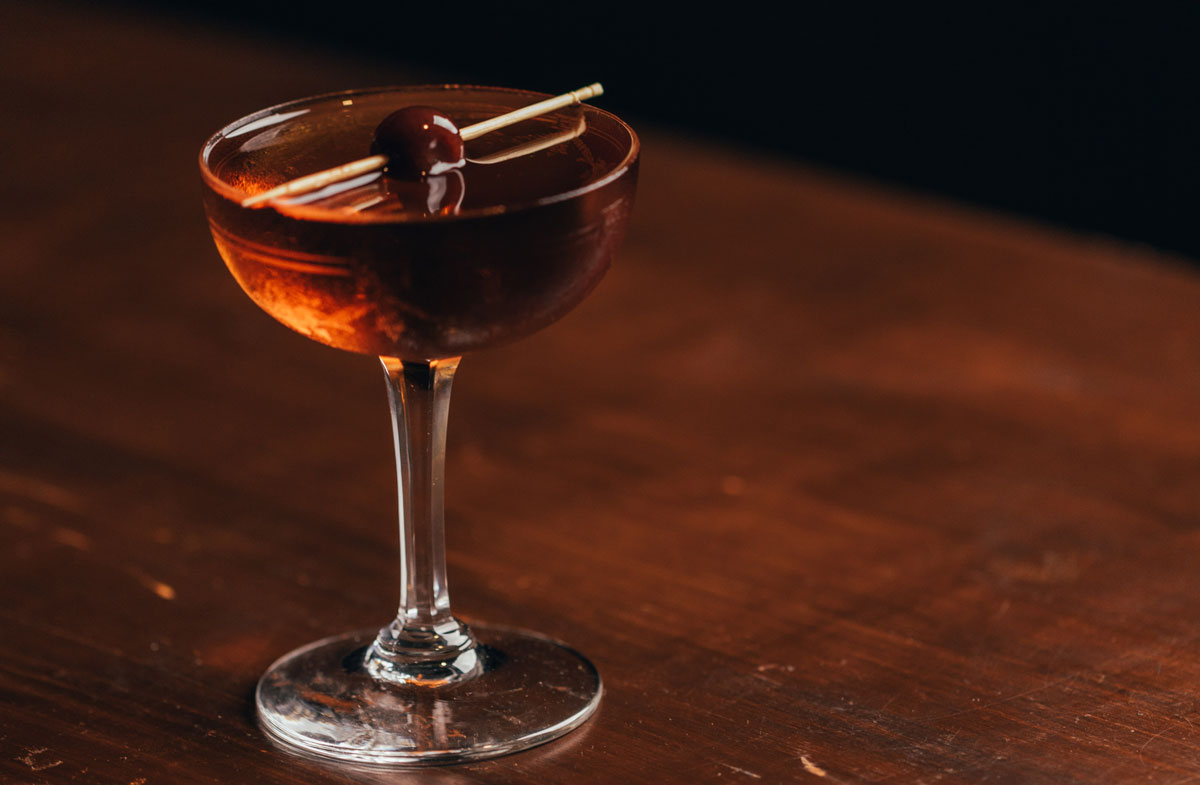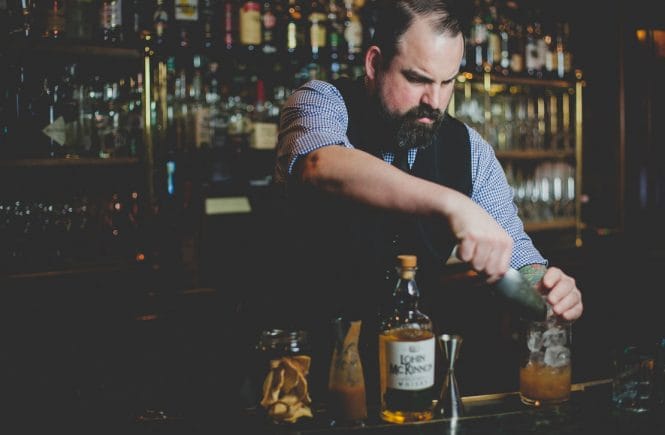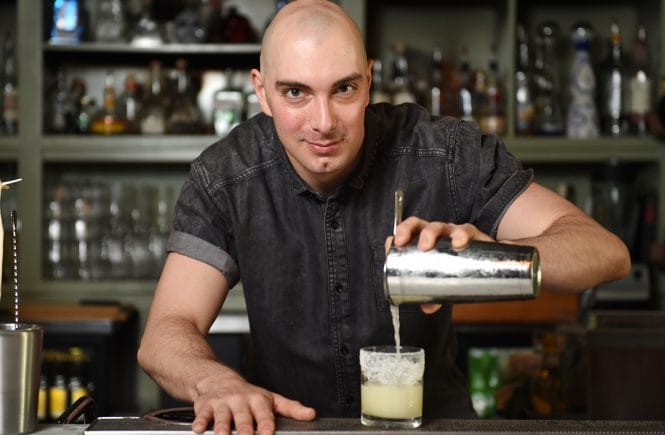And then we try these other city cocktails

Like its namesake city, the Manhattan is elegant but uncompromising and invulnerable to fashion’s changing whims. Oh, sure, it can bend a little—rocks or up, bourbon or rye, occasionally willing to entertain a variation like the scotch-inflected Rob Roy—but it will always be what it is: a drink of whisky, vermouth and bitters.
It’s been that way since the 1880s, when it was invented. Or maybe it was the 1870s or 1860s. In any case, writing in Difford’s Guide, Simon Difford notes that “the Manhattan is regarded as the first ‘modern cocktail.’” Or as the late bartending legend Gary “Gaz” Regan once said, “It was the drink that changed the face of cocktails.”
Where the drink veered from the traditional “bittered sling” formula of spirit, sugar and bitters was with the use of aromatized and fortified wine, in other words: vermouth. Every vermouth-based cocktail since, from the Martini to the ubiquitous Negroni, can trace its lineage to the Manhattan.
Who came up with this clever idea is lost to the mists of time. Some sources say it was created in the early 1880s for a party thrown by Lady Randolph Churchill in New York’s Manhattan Club. Others insist it was invented by a man named Black at a joint south of Houston Street. No one knows for sure, but its first mention in print was in a September 1882 article published by the Olean, New York, Sunday Morning Herald, so it must have been kicking around for some time by then.
In any case, we’re still enjoying pretty much the same drink 150 years later.
Back then it was made with equal parts whisky—typically rye—and Italian (sweet) vermouth, with some recipes adding a dash of gomme syrup, orange bitters or absinthe along with angostura bitters. Today the proportions are typically 2:1 whisky to vermouth. Bourbon occasionally muscles its way in instead of rye.
It’s that balance of rich whisky with sweet, herbal vermouth and the spice of bitters to tie it all together that makes it such an enduring classic.
The Manhattan is also a leader in another way—in drinks named for cities, of which there are surprisingly few. Here are some of the best known.
The Boroughs
Aside from the Manhattan, New York City has a whole lineup of cocktails named after its boroughs. The Bronx is basically a perfect Martini with a splash of orange juice; the Queens is similar, but with pineapple juice instead of OJ. The Brooklyn, on the other hand, is a drier Manhattan: whisky, dry (French) vermouth, maraschino liqueur, Angostura bitters.
Then there is Long Island, which is not a borough, but home to two of them (Brooklyn and Queens) and lends its name to the lethally boozy mix of tequila, vodka, rum, triple sec and cola known as the Long Island Iced Tea.
Singapore Sling
Back in 1915, at the Long Bar in Raffles Hotel, a bartender named Ngiam Tong Boon whipped up this concoction of gin, cherry heering, Bénédictine, lime and bitters, topped with soda, and the cocktail-sipping world has never been the same.
Parisian
Created in the 1920s to promote crème de cassis, the Parisian is equal parts vermouth, gin and blackcurrant liqueur. Sadly, it’s never been as popular as other cocktails (allegedly) invented in the City of Lights like the Sidecar, French 75 or Boulevardier.
Moscow Mule
This is another, much more successful, cocktail invented to promote a struggling product, in this case, Smirnoff vodka. That was in the 1950s, just before some guy named James Bond would send sales of vodka soaring.
Toronto
Not a million miles away from the Manhattan in style, location or ingredients, the Toronto first appeared in print in 1922, replacing vermouth with the darker, more intensely herbaceous Fernet-Branca.
Vancouver
Vancity’s hometown cocktail was, the story went, created at the Sylvia in the 1950s to celebrate the opening of the city’s first official cocktail bar. But as it turns out, the Vancouver Club had been making a similar drink of gin, sweet vermouth, Bénédictine and bitters for some 30 years before that. We’ll happily raise a glass to either tale.
—by Joanne Sasvari




